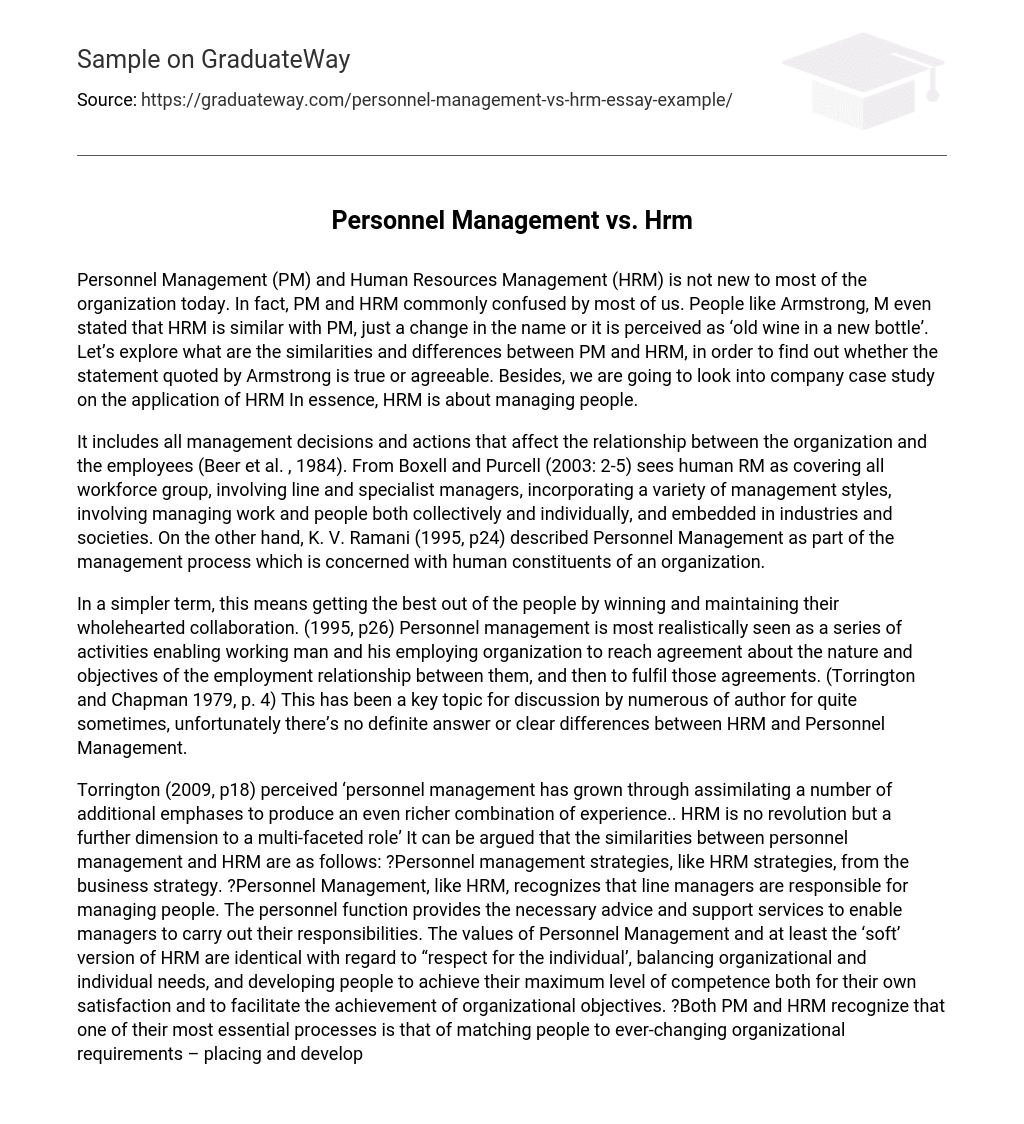Personnel Management (PM) and Human Resources Management (HRM) are commonly understood concepts in contemporary organizations. Although sometimes confounded, PM and HRM can be seen as interchangeable terms by scholars like Armstrong, who suggests that HRM is essentially a rebranding of PM, encompassing the same fundamental principles packaged differently. Evaluating the resemblances and distinctions between PM and HRM becomes vital in assessing the validity of Armstrong’s assertion. Furthermore, an examination of a case study will illustrate how HRM is implemented within a company. Ultimately, the essence of HRM lies in proficiently managing individuals.
According to Beer et al. (1984), HRM refers to all decisions and actions made by management that affect the relationship between the organization and its employees. Boxell and Purcell (2003: 2-5) define HRM as including all groups of workers, with involvement from both line and specialist managers. They suggest that it encompasses different management styles for collective and individual work and individuals, and is integrated into industries and societies. However, K. V. Ramani (1995, p24) describes personnel management as a subset of overall management that specifically focuses on the human aspects within an organization.
Simply put, this means maximizing the effectiveness of individuals by gaining and retaining their full cooperation. (1995, p26) Personnel management can be viewed as a set of activities that allow the employee and the organization to come to an agreement about the nature and goals of their working relationship, and then to fulfill those agreements. (Torrington and Chapman 1979, p. 4) This has been a widely debated topic among many authors for a while, but unfortunately, there is no definitive answer or clear distinctions between HRM and Personnel Management.
Torrington (2009, p18) suggests that personnel management has evolved by incorporating various perspectives, resulting in a more comprehensive role. According to Torrington, HRM is not a revolution but rather an additional dimension to a multifaceted role. There are several similarities between personnel management and HRM, including the incorporation of business strategies into personnel management strategies. Both personnel management and HRM acknowledge the responsibility of line managers in managing people, with the personnel function providing the necessary support and guidance. The values of personnel management and the ‘soft’ version of HRM align in terms of respecting individuals, balancing organizational and individual needs, and developing people to enhance their competence for both personal satisfaction and organizational success. Additionally, both personnel management and HRM recognize the importance of matching individuals with the changing requirements of the organization, ensuring that the right people are placed in the right positions and developing them accordingly.
The same range of selection, competence analysis, performance management, training, management development, and reward management techniques are utilized in both HRM and PM. PM, similar to the ‘soft’ version of HRM, places significance on communication and participation within an employee relations system. Legge (1989) has identified three distinguishing features between HRM and Personnel Management from her literature review: Personnel Management primarily focuses on non-managers, while HRM is less clearly focused but emphasizes managerial staff. HRM is an integrated line management activity, contrasting with personnel management which aims to influence line management. HRM emphasizes senior management’s involvement in managing culture while personnel management is skeptical of organization development and related unitarist, social-psychological concepts. In summary, Human Resource Management (HRM) and Personnel Management (PM) play vital roles in the management process in today’s highly competitive business world.
Furthermore, there is an increasing interest in HRM and PM in organizations’ business strategy and management discussions. The importance of HRM and PM in achieving organizational success is becoming more evident. Organizations are putting significant efforts into human resource development through investments in recruitment and training programs for employees.





